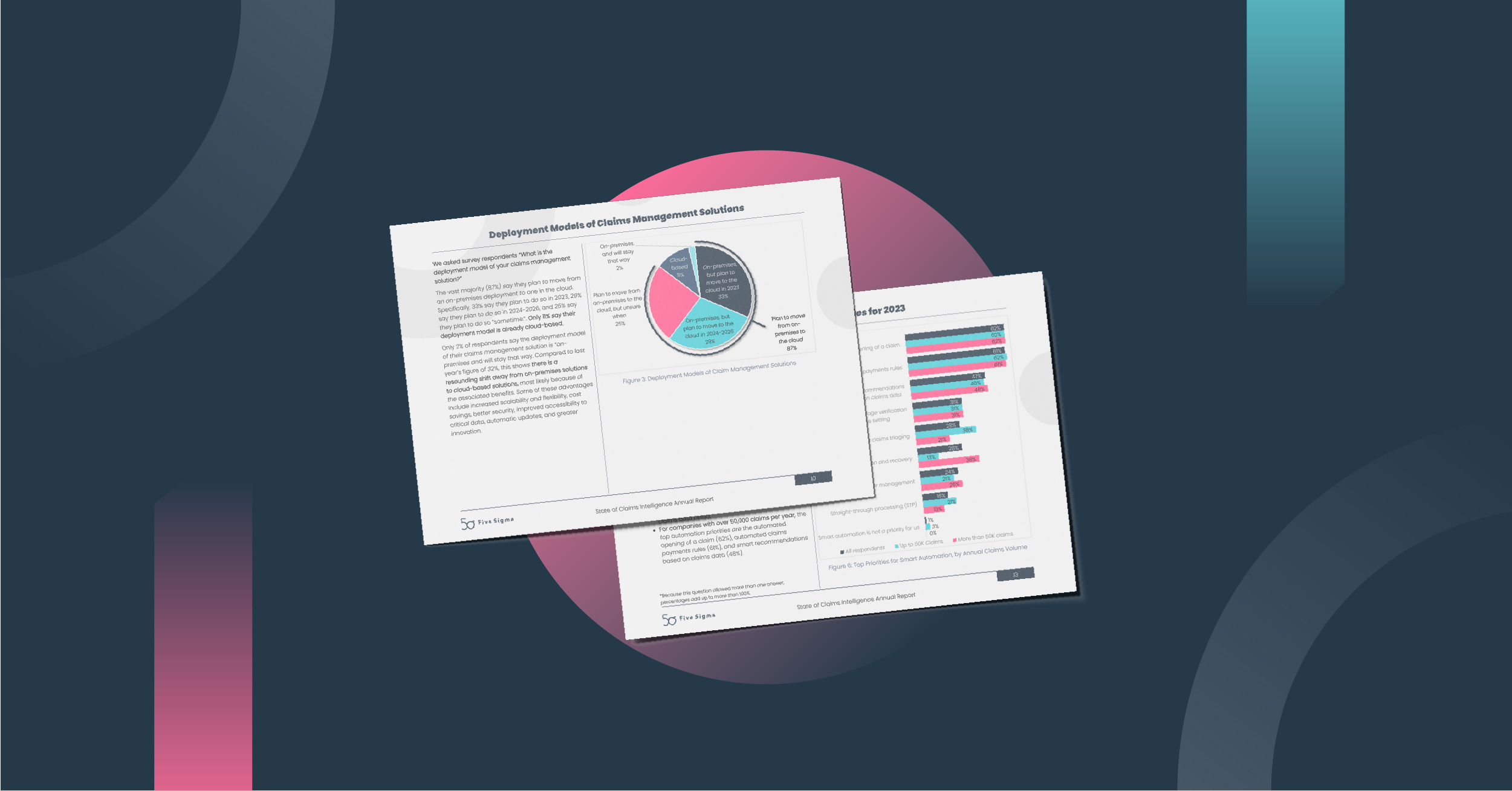Claims Data Is a Hidden Treasure. It Doesn’t Need to Be.
Although many of today’s insurers are trying to digitize their processes and leverage data for analytics, much of the interesting (and useful) claims data is still left unexplored.
It’s no secret that the insurance business is built on data. For example, the price of an insurance policy depends heavily on the frequency and severity of losses that its provider tends to experience over time.
But handling an insurance claim is a complicated process. Summarizing it with one number (the amount paid) means missing out on useful information and valuable opportunities. Although many of today’s insurers are trying to digitize their processes and leverage data for analytics, much of the interesting (and useful) claims data is still left unexplored.
Why is so much data unused?
The source of the problem is that much of the claims data is in an unstructured format—especially adjusters’ notes that provide context and reasoning around their decision-making processes. This unstructured data also contains the key elements that differentiate between different types of claims.
Some common questions that often arise and remain unanswered are along the lines of these:
- Why did two claims that apparently had the same characteristics end up resulting in two very different payment amounts?
- After two claims appeared to start off with the same characteristics, why did one of these claims take twice as long to process as the other one did?
Often, the answers to questions like these are hidden somewhere in a claims adjuster’s notes.
How can we make good use of this data?
Leveraging claims data can open many opportunities to accelerate innovation, optimize operations, and gain unique insights into an insurance company. Organizations that effectively leverage their claims data can use it to avoid claims leakage and grow rapidly. This kind of information is particularly useful for quality assurance programs and KPI management.
Claims quality assurance (QA) is the process of reviewing a claim to see that it was handled correctly, according to the company’s standard operating procedures. This process can be done using supervisors, third-party auditors, reinsurance companies, and more. However, an insurance company cannot conduct quality assurance for all of the claims it processes.
It is a challenging task to understand which claims should be reviewed. Taking the easy way out could mean choosing randomly or focusing on high-paying claims. However, these approaches are flawed, as high claims payments do not necessarily mean that there was something wrong with the claims handling.
Instead, we can overcome this challenge using claims data: When platforms automatically gather structured claims data, it is possible to find key indicators of possibly problematic claims. This approach can steer an organization’s leadership towards looking into the right claims to understand deficiencies in the organization. Making sure the QA results are structured in the platform itself allows for the necessary feedback loop to make sure that both the organization and its models keep improving all the time.
How can KPIs shed light on general trends?
Whereas claims QA is a very detailed analysis into specific claims, KPI management seeks a higher-level view of all claims performance. It is about understanding some critical stats about the organization’s operation.
For example, because contact with insured people is critical in claims management, many organizations have KPIs such as “24-hour contact with insured” or “first payment within three business days.” In order to automatically gather these KPIs at scale, the platforms used by insurance companies need to understand what “contact” with the insured means and how to recognize it.
But, limited by today’s technology, many organizations instead revert to adding more fields that adjusters need to manually set. (For instance, imagine a field called, “Did you contact the insured in 24 hours?”). The two obvious disadvantages of this approach are that the data is not very reliable and that filling out this field is inconvenient for the claims adjuster—delaying their progress on their core responsibility of handling customer claims.
Can we gather unique and valuable data and achieve these benefits (and many more) without taxing claims adjusters but rather by helping them? With modern technology, companies that invest in modeling the complex claims management process are uniquely positioned to gain structured datasets that answer at scale the questions that we just posed.
When utilized effectively, claims datasets can empower insurance companies to optimize their processes and to understand their risks and opportunities. These datasets can also enable carriers to always stay compliant with complete digital claim files, and to do so efficiently. Moreover, the goldmine of structured data will allow innovative insurers to outsmart their rivals and stay ahead of the curve in the competitive insurance market.




